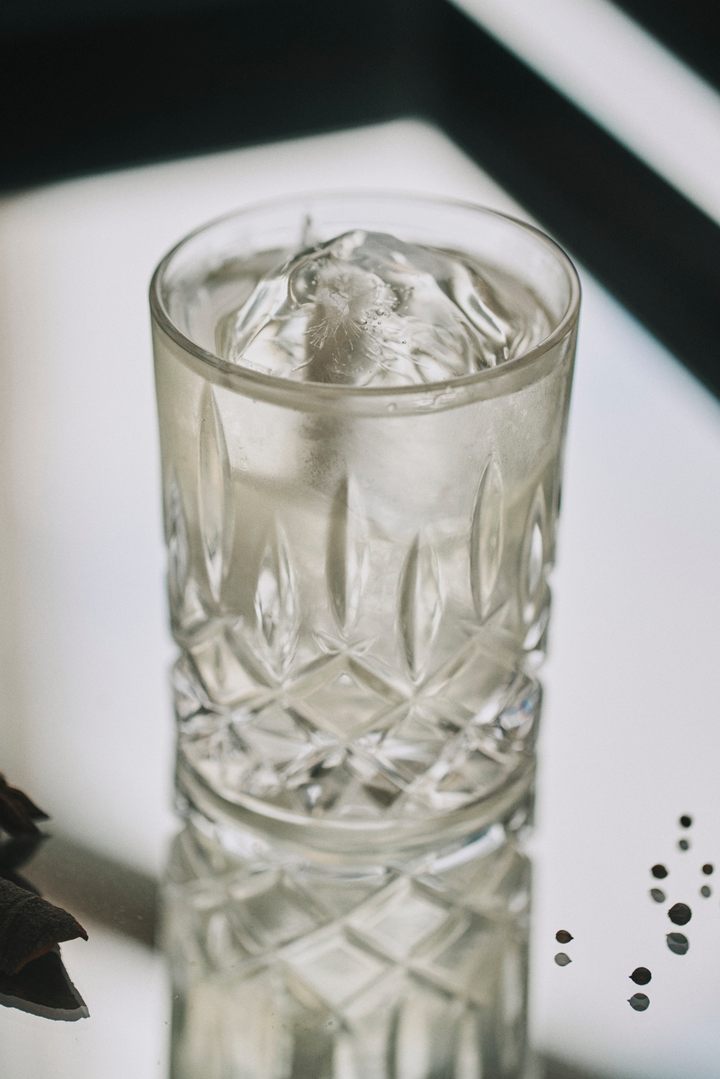

Make the Crystal-Clear Milk Cocktail Loved by a Spy and a Founding Father
Upgrade your punch game with a 400-year-old science trick.
This month, Gastro Obscura is looking at wondrous wintertime cocktails. Yesterday’s recipe was Moose Milk, the sweet, potent eggnog of the Canadian military.
In addition to being an accomplished poet, playwright, and royal spy for King Charles II, Aphra Behn threw a hell of a party. A cultural maverick in 17th-century England, Behn didn’t care much for the norms imposed on the women of her day. She was married just long enough to snatch her husband’s last name and relied on her blistering wit for financial independence, writing plays every bit as bawdy as her male counterparts. She also loved a good drink. When entertaining her fellow London literati, Behn didn’t serve just any kind of punch. Rather, she opted for a concoction of brandy, lemon juice, and dairy that would be miraculously transformed into a glass-clear cocktail.
Clarified milk punch is the kind of scientific sleight of hand that feels far too contemporary to be centuries old. Despite what its ingredient list might imply, the end result is not only devoid of color but also dangerously easy to drink. Slightly sweet, full of spices, and velvety-smooth on the palate, the punch made an impression on Behn’s guests.
“One of her contemporaries wrote about consuming this delicious milk punch made by Aphra Behn in the 1600s,” says Eamon Rockey, who helped introduce a new generation to clarified milk punch while he was bartending at New York’s Eleven Madison Park in 2008. Since then, he’s gone on to become something of a clarified-milk cocktail evangelist, making versions with everything from goat’s milk to beet juice and, in 2018, launching his own line of bottled milk punch called Rockey’s Botanical Liqueur.
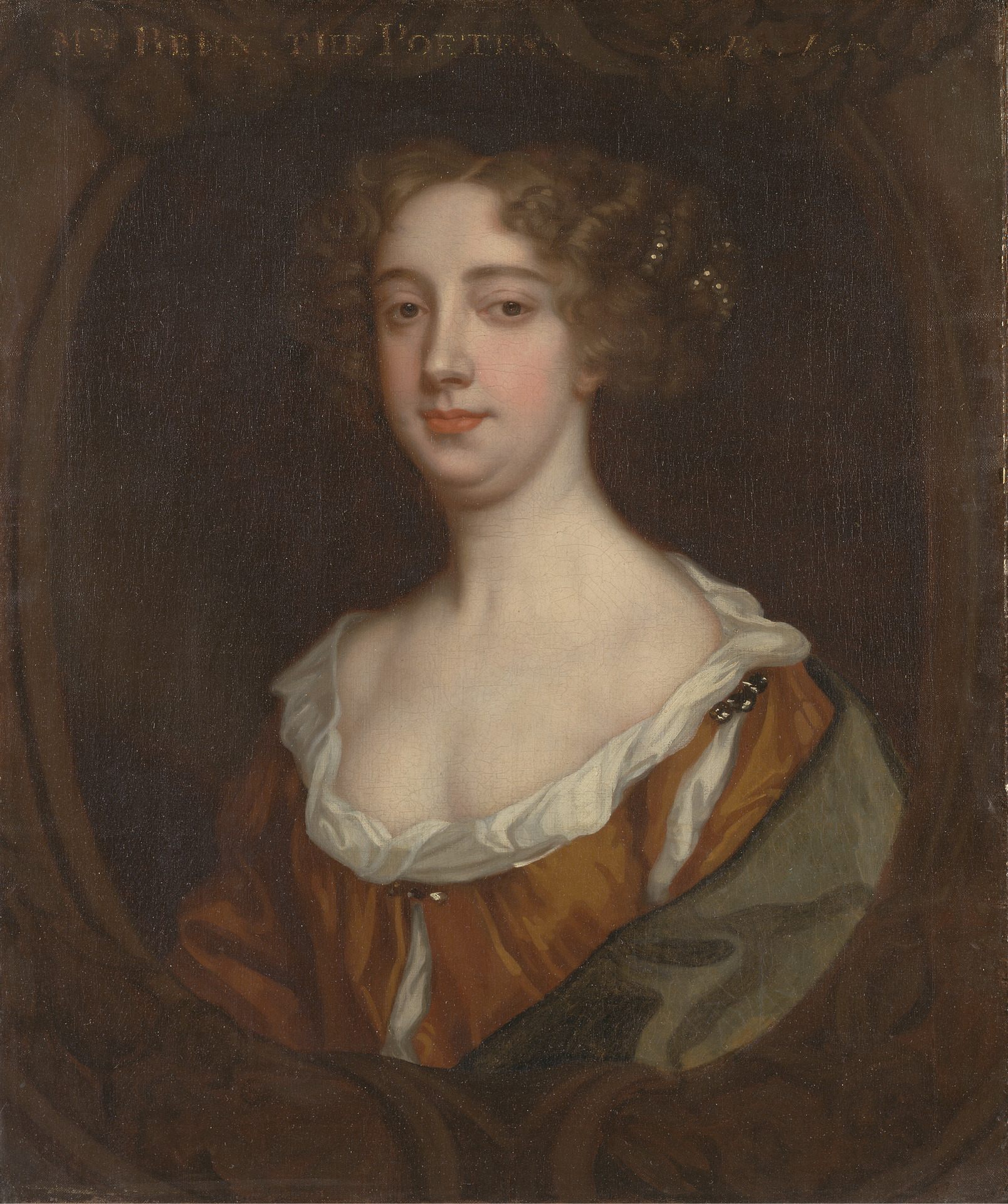
Given that the earliest written record of the drink belongs to Behn, she may have come up with the idea, although it could also simply have been a popular drink of the times. According to David Wondrich, who writes about the history of the cocktail in his book Punch, the oldest surviving recipe belongs to another woman: Mary Rockett, a housewife who wrote down her clarified milk punch recipe in 1711.
Wondrich also notes in his book Imbibe that the milk punch had a serious reputation for potency, citing an 1873 article in the Brooklyn Eagle that called it “the surest thing in the world to get drunk on, and so fearfully drunk, that you won’t know whether you are a cow yourself, or some other foolish thing.” Nevertheless, Benjamin Franklin, who enclosed a recipe in a 1763 letter, was a fan, as was Charles Dickens, who left a few bottles of the stuff in his cellar after his death. Queen Victoria liked Nathaniel Whisson’s version so much that in 1838 she made his company the official “purveyors of milk punch to Her Majesty” and President Grover Cleveland most likely served it to guests, if the 1887 edition of The White House Cookbook is any indication.

Unlike New Orleans–style brandy milk punch—a creamy, nog-adjacent cocktail that came along much later—the clarified cocktail is shelf-stable. “You can pop a cork in it, put it in your cellar, and age it like wine,” Rockey says. It’s a quality that would have made the punch especially appealing during the lean winter months prior to the invention of refrigeration. “This ensured that you could drink it all year long. Until you get the next season’s fruits and whatnot, you would still have milk punch. Many [milk punches] actually get better in time.”
Even before Behn’s wild soirées, the English were already sipping curdled-milk cocktails called syllabubs and possets. The latter would have been poured from a special tea kettle or ornate porcelain glass with a straw, so that the drinker could sip the boozy whey below, then spoon up the curds as a dessert. Both drinks were popular enough among wealthy Brits to make cameos in works by Jane Austen and William Shakespeare. “I’m near certain those are the precursors [to clarified milk punch],” Rockey says. “If you look at how possets and syllabubs are made, it’s the same. There’s acid, there’s sweetener, there’s spices, and there’s milk.”
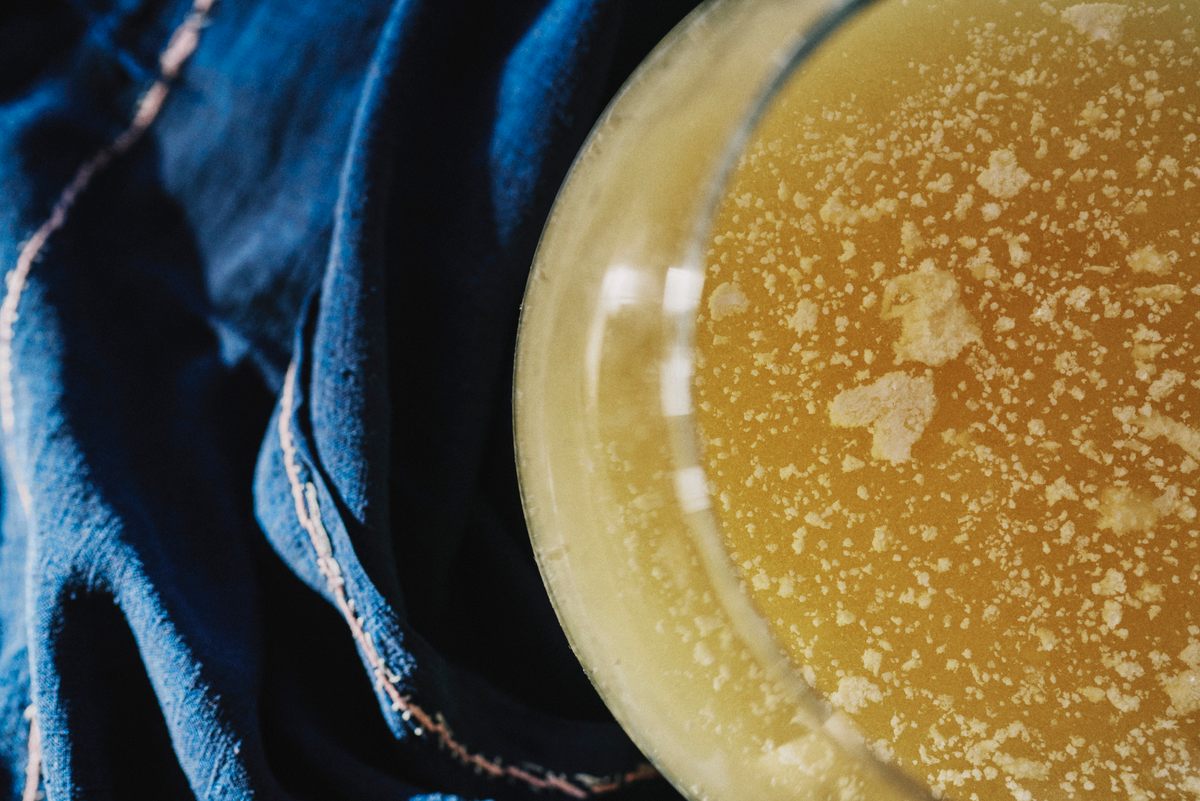
Rockey first encountered clarified milk punch in the early aughts when Cameron Brogue, then head bartender at Bar Pleiades, stumbled across the recipe in The Bartender’s Guide, an 1862 classic by Jerry Thomas (also sometimes called The Bon-Vivant’s Companion). On paper, the recipe had all the hallmarks of a terrible idea: a literal hot mess of curdled dairy, citric acid, pineapple juice, tea, and booze. When milk comes in contact with acid and alcohol, it separates. The magic happens when the revolting-looking mixture passes through a filter. The curds settle to the bottom, forming a nest, and the milk proteins, called casein, strip the liquid of both its color and harsh tannins.
“As a former chef, I looked at it from a technique perspective and thought there was something very special about this recipe that could be adapted and riffed on,” Rockey says. Nowadays, variations ranging from milk-clarified mezcal Old Fashioneds to ube-tinted numbers with yuzu have become so widespread that some wonder if the trend has jumped the shark.
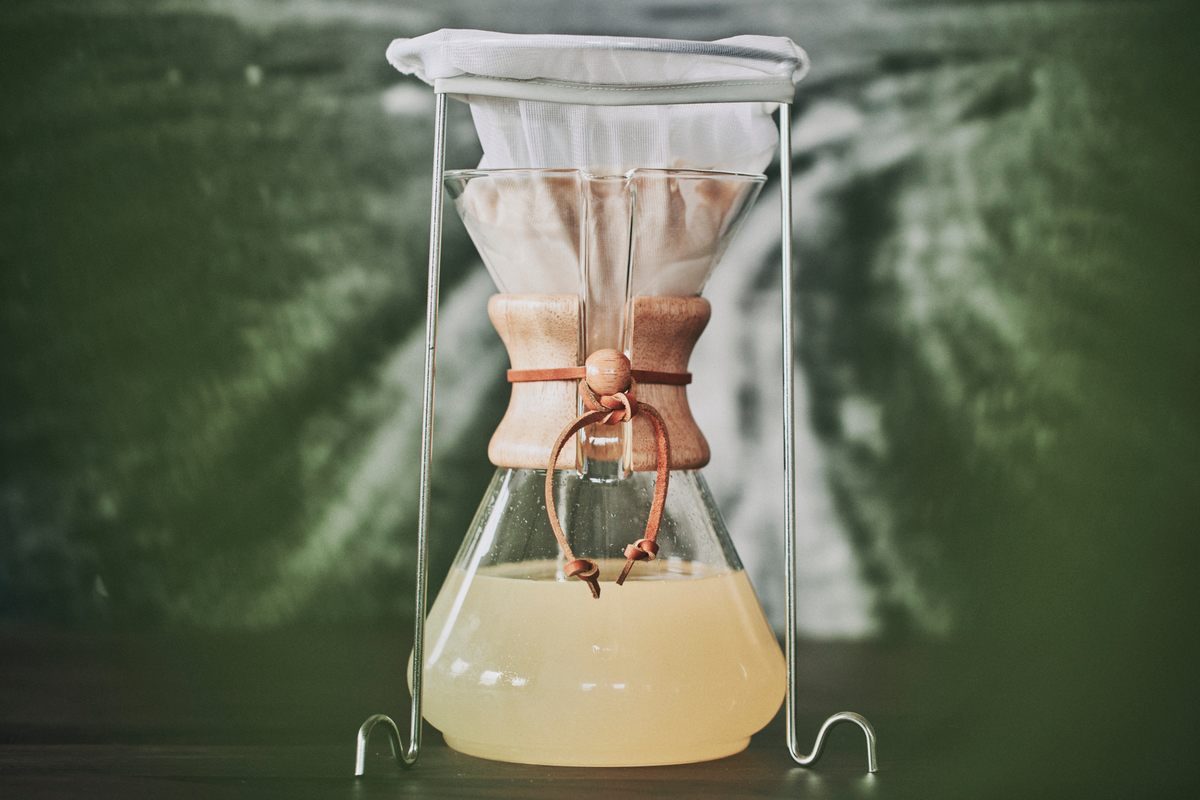
Yet for something that looks so unmistakably chef-y, clarified milk punch requires zero centrifuges or other molecular-gastro contraptions. All amateur mixologists need to make it at home is a loose-mesh filter—a jelly strainer used for making preserves works great, as does a clean pillowcase or T-shirt—and enough faith to trust the process.
“Milk punch is always stressful,” Rockey says. “I’ve probably made more milk punch than anybody alive at this point and every time I see all these ingredients, I’m like, ‘There’s no way this shit’s going to work.’ You’re looking at dark black tea and brown liquor. The milk is completely opaque. But if you do it right, it will come through perfectly clear.”
If made using his and other modern-day bartenders’ suggestions, milk punch is a two-day, multi-step, many-dish affair. Why go to all the fuss? Because milk punch is undeniably festive, not to mention a visual show-stopper. Plus, as Behn knew, it’s ideal for entertaining. Make it a day, a week, or a month in advance, then pop it out of the fridge and leave your guests wondering just how you did it.

Clarified Milk Punch
Adapted from The Bartender's Guide, or The Bon-Vivant's Companion by Jerry Thomas
- 12 to 16 servings
Ingredients
- 6 lemons juiced, 2 zested
- 2 cups granulated sugar
- 1 pineapple, juiced (or 500 milliliters pineapple juice)
- 6 cloves
- 20 coriander seeds
- 1 stick cinnamon
- 2 cups cognac
- 2 cups rum
- ½ cup Arrack
- 1 cup of strong, brewed green tea
- 1 quart boiling water
- 1 quart whole milk (preferably organic and not ultra-pasteurized)
- Freshly grated nutmeg for garnish (optional)
Instructions
-
Combine the lemon zest, cloves, coriander, and cinnamon with the cognac, rum, and Arrack in a large container and allow to sit at room temperature for a minimum of three hours, or overnight, to infuse. Strain out all of the solids and discard.
-
Add the sugar, pineapple juice, lemon juice, green tea, and boiling water to the spirits mixture. Stir until the sugar is fully dissolved and all of the ingredients are thoroughly combined.
-
In a large saucepan over medium heat, bring the milk to a bare simmer. As soon as the top starts to shimmer, remove it from heat.
-
Pour the heated milk into a large container, then pour the spirits mixture into the heated milk (it’s important to pour the spirits into the milk rather than the other way around, which will result in a mess of smaller curds that don’t filter out). It should begin to curdle almost immediately.
-
Allow the mixture to cool, then set in the refrigerator, ideally overnight. The mixture can be clarified sooner, but the overnight rest allows the flavors to develop and ensures that the cocktail won’t become cloudy when refrigerated, the way iced tea sometimes can.
-
The next day, set a jelly strainer bag over a large Chemex or glass container. Jelly strainer bags are available at most cookware stores or online. In a pinch, a clean, white cotton T-shirt or pillowcase works well. Do not use coffee filters or cheesecloth, which will absorb too much of the cocktail and dramatically slow down the process. Remember that the milk proteins in the curds, not the fibers in the filter, are what clarify the liquid—you only want to provide a loose framework that allows the nest of curds to form at the bottom.
-
Very slowly and carefully pour the curdled mixture in its entirety into the jelly strainer bag. It should flow very quickly at first, then slow to a trickle as curds form a nest at the bottom of the strainer and the casein proteins form a natural filtration system.
-
When all of the liquid has passed through the jelly strainer bag, very carefully pour it through the jelly strainer again. Pour slowly so as not to break up the nest of curds at the bottom of the strainer.
-
Repeat this step two to three more times until the desired level of clarity is achieved.
- At this point, the clarified milk punch can be poured over ice and served immediately, or bottled in sterilized, air-tight containers and stored for up to six months in the refrigerator. Garnish with nutmeg, if desired.
Gastro Obscura covers the world’s most wondrous food and drink.
Sign up for our email, delivered twice a week.

















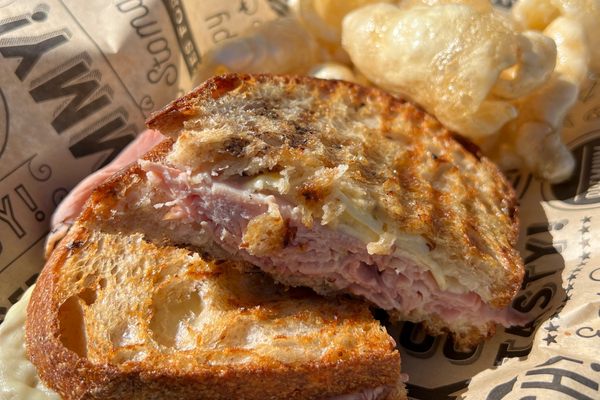
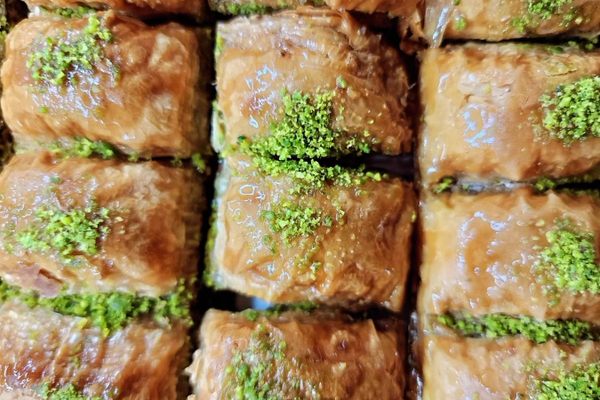
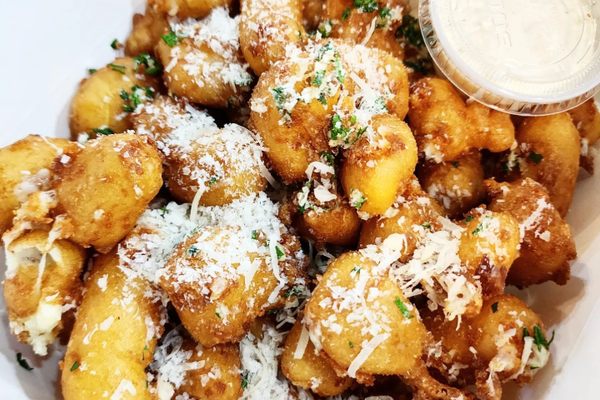
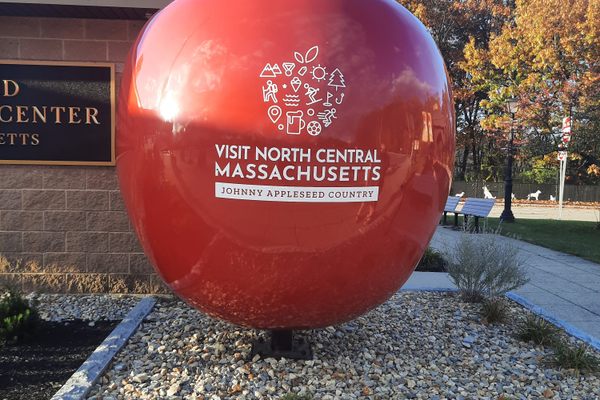





Follow us on Twitter to get the latest on the world's hidden wonders.
Like us on Facebook to get the latest on the world's hidden wonders.
Follow us on Twitter Like us on Facebook